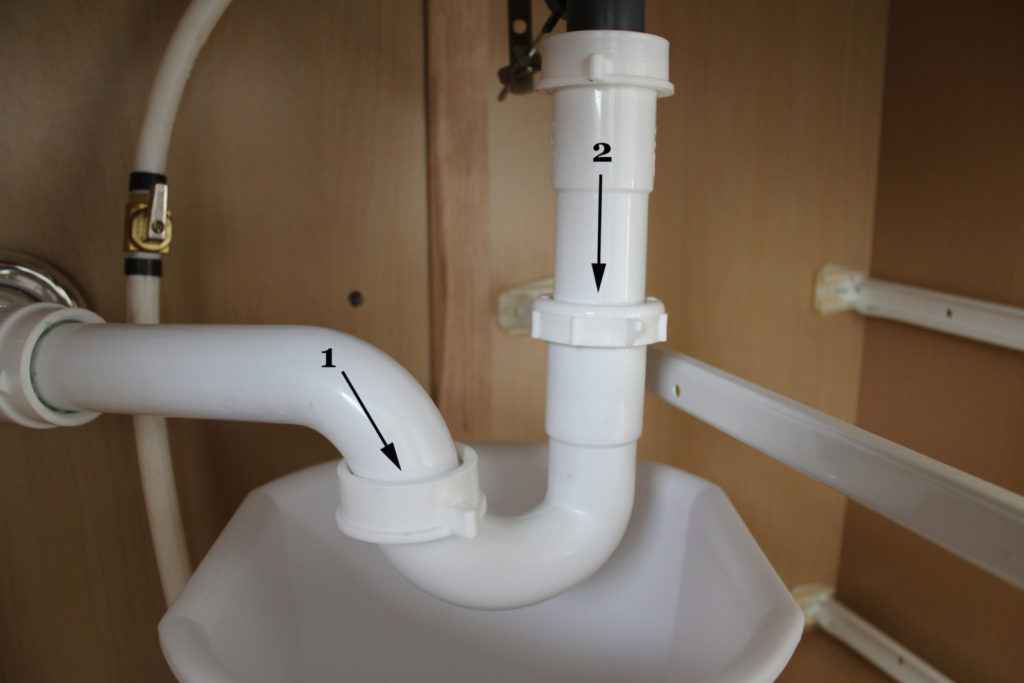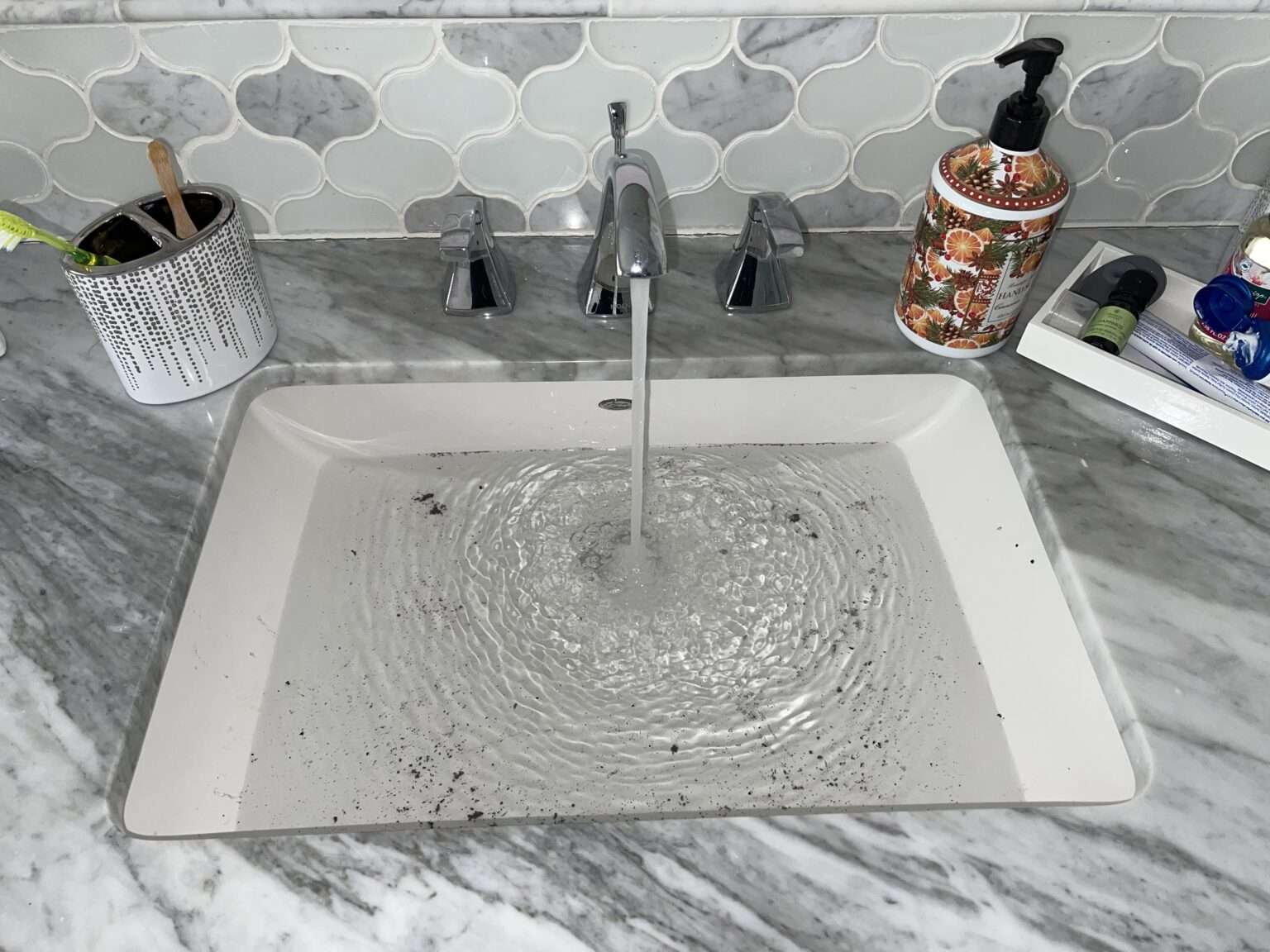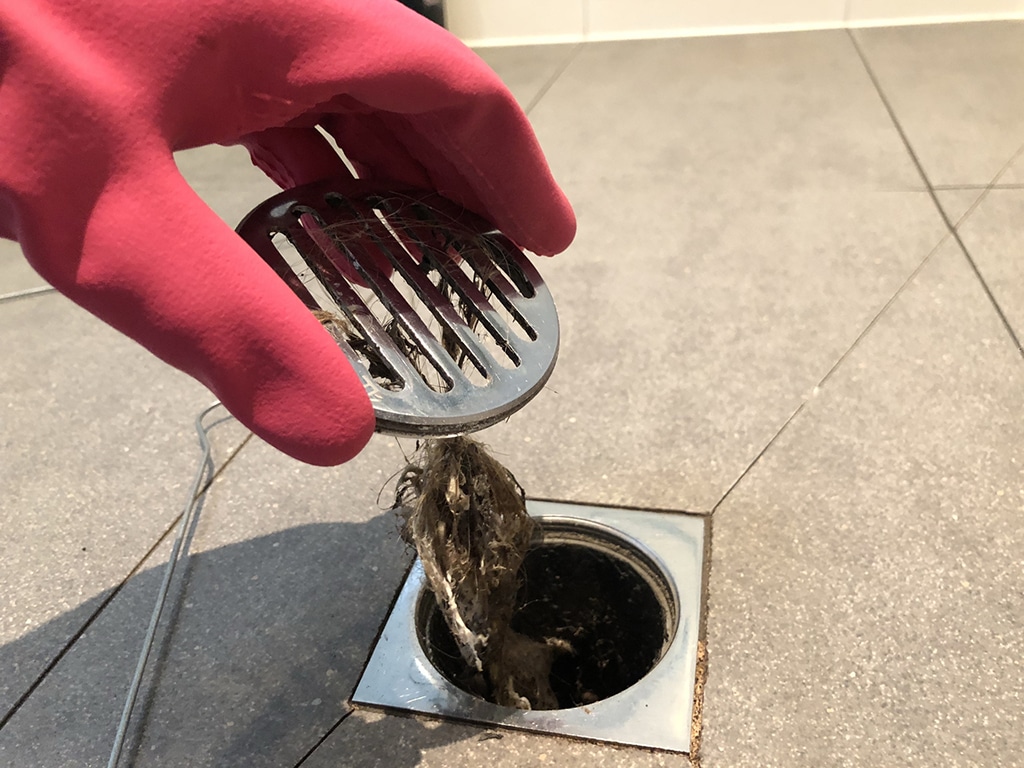If you're standing in front of your bathroom sink, staring down at a pool of stagnant water, you know the frustration of a clogged sink. It can be a major inconvenience and can disrupt your daily routine. Fortunately, there are several ways to unclog a bathroom sink and get the water flowing again. One of the most common causes of a clogged bathroom sink is hair and soap scum buildup. Over time, these substances can create a blockage in the drain, preventing water from draining properly. But don't worry, with a few simple tools and techniques, you can have your sink back to its normal state in no time. Here are 10 ways to unclog your bathroom sink and prevent future clogs:Unclog a Bathroom Sink
If your bathroom sink is draining slowly, it's a sign that there is a clog somewhere in the drain. This can be caused by a buildup of hair, soap scum, or other debris. Luckily, there are a few simple steps you can take to fix a slow-draining bathroom sink. The first step is to remove the drain stopper and clean out any debris that may be caught in it. You can use a pair of tweezers or a small brush to remove any hair or gunk that has accumulated. Then, try using a plunger to create suction and dislodge the clog. If that doesn't work, you can try pouring a mixture of hot water and baking soda down the drain to break up the clog.How to Fix a Slow-Draining Bathroom Sink
If the plunger and hot water and baking soda mixture don't work, there are a few other DIY solutions you can try before calling a plumber. One option is to use a drain snake or auger to physically break up the clog and remove it from the drain. You can also try using a mixture of vinegar and baking soda, followed by hot water, to dissolve any buildup in the drain. Another DIY solution is to use a mixture of salt and baking soda, followed by vinegar and hot water, to create a chemical reaction that can help break up stubborn clogs. Just be careful when using this method, as the mixture can create a lot of foam and pressure in the drain.DIY Solutions for a Slow-Draining Bathroom Sink
Knowing the common causes of a clogged bathroom sink can help you prevent future clogs from occurring. As mentioned before, hair and soap scum buildup are often the culprits. But other common causes include toothpaste, dental floss, and foreign objects like jewelry or small toys that may accidentally fall into the drain. You can prevent these types of clogs by using a drain cover or stopper to catch any debris before it goes down the drain. It's also a good idea to clean your sink regularly to remove any buildup and prevent it from becoming a larger issue.Common Causes of a Clogged Bathroom Sink
A plunger can be a useful tool when it comes to unclogging a bathroom sink. To use a plunger, you'll want to fill the sink partially with water, enough to cover the rubber end of the plunger. Then, place the plunger over the drain and push down and pull up quickly to create suction. This can help dislodge the clog and allow water to flow freely again. If you have a double sink, you may need to cover the non-clogged drain with a wet rag to create enough suction to unclog the other drain.How to Use a Plunger on a Bathroom Sink
If your clog is particularly stubborn, you may need to use a chemical drain cleaner to break it up and remove it from the drain. However, these products can be harsh and may damage your pipes if used too frequently. It's important to follow the instructions carefully and wear protective gear, such as gloves and eye protection, when using these products. It's also important to note that chemical drain cleaners are not safe for all types of pipes, so be sure to check the label before using them. If you have older pipes or a septic system, it may be best to avoid using chemical drain cleaners altogether.Chemical Drain Cleaners for Bathroom Sinks
If you prefer to use natural products in your home, there are several natural remedies you can try to unclog your bathroom sink. One of the most effective is a mixture of baking soda and vinegar, followed by hot water. This creates a foaming reaction that can help break up the clog and clear the drain. You can also try using a combination of lemon juice and salt, which can help dissolve buildup in the drain. Another natural option is to use a plunger or drain snake to physically remove the clog.Natural Remedies for a Clogged Bathroom Sink
If none of the DIY methods seem to work, or if you're dealing with a particularly stubborn clog, it may be time to call in the professionals. A licensed plumber will have the tools and expertise to handle even the toughest clogs. They may use a high-pressure water jet or other specialized equipment to clear the clog and get your sink back to working order. While hiring a plumber may cost more upfront, it can save you time and frustration in the long run. Plus, they may be able to identify any underlying issues that could lead to future clogs and address them before they become a bigger problem.Professional Plumbing Services for a Clogged Bathroom Sink
The best way to deal with a clogged bathroom sink is to prevent it from happening in the first place. Regular maintenance and a few simple habits can go a long way in keeping your sink drain clear and free-flowing. One important habit is to clean your sink regularly, removing any buildup and debris that may be caught in the drain. You can also use a drain cover or stopper to catch any larger items before they can go down the drain. Avoid putting things like grease, hair, and coffee grounds down the drain, as these can all contribute to clogs.Preventing Clogs in Your Bathroom Sink
If you find yourself dealing with frequent clogs in your bathroom sink, it may be a sign that you need to replace the sink drain. Over time, drains can corrode or become damaged, making it easier for debris to get caught and cause clogs. If you notice your sink draining slowly, or if you can see visible damage to the drain, it's best to have it replaced by a professional. Replacing the drain with a new one can help prevent future clogs and ensure that your sink drains properly. Plus, it can give your bathroom a fresh and updated look. Dealing with a clogged bathroom sink can be a hassle, but with these 10 solutions, you can keep your sink clear and avoid any major plumbing issues. Remember to regularly clean your sink and be mindful of what you put down the drain to prevent future clogs. And if all else fails, don't hesitate to call a professional plumber for help.Signs You Need to Replace Your Bathroom Sink Drain
Troubleshooting Your Clogged Bathroom Sink

Causes of a Clogged Sink
 One of the most common household plumbing problems is a clogged bathroom sink. It can be a frustrating and inconvenient issue, but understanding the root cause can help you prevent it from happening again in the future. A clogged sink is often caused by a buildup of hair, soap scum, or other debris in the drain pipes. Over time, these substances can accumulate and create a blockage, preventing water from draining properly.
One of the most common household plumbing problems is a clogged bathroom sink. It can be a frustrating and inconvenient issue, but understanding the root cause can help you prevent it from happening again in the future. A clogged sink is often caused by a buildup of hair, soap scum, or other debris in the drain pipes. Over time, these substances can accumulate and create a blockage, preventing water from draining properly.
DIY Solutions
 If you're dealing with a clogged bathroom sink, you may be tempted to reach for a chemical drain cleaner. However, these harsh chemicals can damage your pipes and are harmful to the environment. Plus, they may not always be effective in clearing the clog. Instead, try these natural solutions that are not only safer but also more eco-friendly.
Baking soda and vinegar:
This classic combination can work wonders for unclogging a sink. Start by pouring half a cup of baking soda down the drain, followed by one cup of vinegar. Let it sit for 15-20 minutes, then flush with hot water.
Boiling water:
Sometimes, all it takes is a simple solution like boiling water to clear a clogged sink. Boil a pot of water and carefully pour it down the drain in two to three stages, giving it a few seconds to work its way through the pipes before adding more.
Plunging:
If the clog is stubborn and won't budge, you can try using a plunger. Make sure to cover the overflow drain with a wet cloth and plunge vigorously until the water starts draining.
If you're dealing with a clogged bathroom sink, you may be tempted to reach for a chemical drain cleaner. However, these harsh chemicals can damage your pipes and are harmful to the environment. Plus, they may not always be effective in clearing the clog. Instead, try these natural solutions that are not only safer but also more eco-friendly.
Baking soda and vinegar:
This classic combination can work wonders for unclogging a sink. Start by pouring half a cup of baking soda down the drain, followed by one cup of vinegar. Let it sit for 15-20 minutes, then flush with hot water.
Boiling water:
Sometimes, all it takes is a simple solution like boiling water to clear a clogged sink. Boil a pot of water and carefully pour it down the drain in two to three stages, giving it a few seconds to work its way through the pipes before adding more.
Plunging:
If the clog is stubborn and won't budge, you can try using a plunger. Make sure to cover the overflow drain with a wet cloth and plunge vigorously until the water starts draining.
Preventative Measures
 To prevent future clogs, it's important to be mindful of what goes down your bathroom sink. Consider using a hair catcher or drain cover to catch any hair or debris before it goes down the drain. Regularly clean the stopper and pop-up mechanism to remove any buildup. You can also try pouring hot water down the drain once a week to help dissolve any potential clogs.
To prevent future clogs, it's important to be mindful of what goes down your bathroom sink. Consider using a hair catcher or drain cover to catch any hair or debris before it goes down the drain. Regularly clean the stopper and pop-up mechanism to remove any buildup. You can also try pouring hot water down the drain once a week to help dissolve any potential clogs.
When to Call a Professional
 If these DIY solutions don't work, it may be time to call a professional plumber. They have the tools and expertise to properly diagnose and fix the issue. Additionally, if you notice any strange smells or gurgling noises coming from your sink, it could be a sign of a more serious issue that requires professional attention.
In conclusion, a clogged bathroom sink is a common problem that can be easily solved with the right knowledge and tools. By understanding the causes of a clog, using natural DIY solutions, and taking preventative measures, you can keep your sink flowing smoothly and avoid costly plumbing issues in the future. However, if the clog persists, don't hesitate to call a professional for assistance.
If these DIY solutions don't work, it may be time to call a professional plumber. They have the tools and expertise to properly diagnose and fix the issue. Additionally, if you notice any strange smells or gurgling noises coming from your sink, it could be a sign of a more serious issue that requires professional attention.
In conclusion, a clogged bathroom sink is a common problem that can be easily solved with the right knowledge and tools. By understanding the causes of a clog, using natural DIY solutions, and taking preventative measures, you can keep your sink flowing smoothly and avoid costly plumbing issues in the future. However, if the clog persists, don't hesitate to call a professional for assistance.




























:max_bytes(150000):strip_icc()/Five-Ways-to-Fix-a-Slow-Sink-Drain-03-24c1f6dd477d46b9b5d1f70952a76933.jpg)



















































































:strip_icc()/how-to-clean-a-bathroom-sink-drain-01-c728294c8bee42428afdf3e69f449279.jpg)






